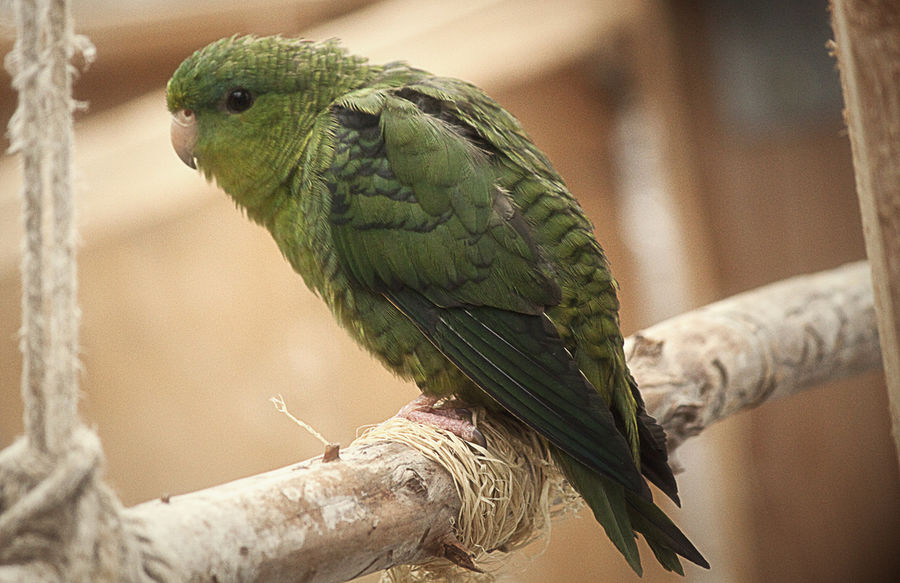Facts About Barred parakeet
The barred parakeet, also known as the lineolated parakeet, Catherine parakeet, or simply 'linnies,' is a captivating small parrot inhabiting highland forests from southern Mexico to Panama, the Andes, the Santa Marta Mountains in Colombia, and the Venezuelan Coastal Range. These birds are easily identifiable by their predominantly green plumage adorned with black and dark green stripes or bars, and their pale-horn colored beaks. The species is divided into two subspecies: Bolborhynchus lineola lineola and Bolborhynchus lineola tigrinus, the latter exhibiting more pronounced dark stripes.
A typical barred parakeet measures about 16 cm in length and weighs between 42 to 52 grams. Their green feathers are accented with black stripes on the upper parts and olive-green hues on the lower parts, with dark green stripes running down the sides. They thrive in forested and mountainous regions, living at altitudes up to 3,300 meters, and are known for their resilience to cold weather. Fortunately, their population remains stable.
During breeding season, barred parakeets lay between two to four eggs per clutch, with chicks usually fledging, or leaving the nest, about five weeks after hatching. In the wild, these birds are social creatures often seen in flocks ranging from six to thirty individuals, feeding on fruits, seeds, and insect larvae.
In the realm of pet birds, barred parakeets are cherished for their calm nature and the variety of color mutations available. They can live up to 10-15 years and are admired for their capacity to mimic sounds and speech. Known for their quiet demeanor, these parakeets enjoy bathing and have a diet consisting of pellets, seeds, vegetables, fruits, and protein sources like eggs. However, owners should avoid feeding them toxic foods such as avocado, caffeine, fruit pits, onions, and mushrooms.
Training these birds to talk can be a delightful experience, with males typically being more vocal. They thrive on interaction and mental stimulation, making it important for owners to engage them with positive reinforcement training techniques to encourage good behavior and enhance their mimicry skills. A balanced diet and plenty of social interaction will help keep these charming parakeets happy and healthy.

 Nicaragua
Nicaragua